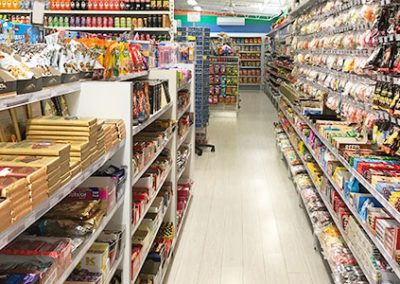The Greatest Guide To I Luv Candi
The Greatest Guide To I Luv Candi
Blog Article
The smart Trick of I Luv Candi That Nobody is Talking About
Table of ContentsI Luv Candi for DummiesSome Of I Luv CandiThe Main Principles Of I Luv Candi The smart Trick of I Luv Candi That Nobody is Talking AboutThe Definitive Guide to I Luv Candi
We've prepared a lot of service plans for this kind of task. Here are the typical customer sectors. Consumer Segment Description Preferences Exactly How to Find Them Kids Youthful customers aged 4-12 Colorful sweets, gummy bears, lollipops Companion with neighborhood colleges, host kid-friendly events Teens Adolescents aged 13-19 Sour candies, novelty items, trendy treats Engage on social media, collaborate with influencers Moms and dads Grownups with young kids Organic and healthier options, sentimental candies Deal family-friendly promos, promote in parenting magazines Pupils University and college pupils Energy-boosting sweets, affordable snacks Partner with neighboring universities, advertise during exam periods Present Shoppers Individuals searching for presents Premium chocolates, gift baskets Produce captivating screens, provide customizable gift choices In assessing the financial dynamics within our sweet-shop, we've discovered that customers usually spend.Observations show that a common customer often visits the shop. Specific periods, such as holidays and unique events, see a rise in repeat sees, whereas, during off-season months, the regularity might decrease. carobana. Calculating the lifetime worth of an average consumer at the sweet-shop, we estimate it to be
With these elements in factor to consider, we can reason that the average profits per consumer, over the course of a year, floats. The most successful customers for a sweet shop are typically family members with young youngsters.
This demographic has a tendency to make constant acquisitions, increasing the store's profits. To target and attract them, the sweet shop can employ colorful and lively advertising and marketing strategies, such as dynamic screens, memorable promos, and perhaps even holding kid-friendly events or workshops. Developing an inviting and family-friendly ambience within the store can also boost the total experience.
9 Simple Techniques For I Luv Candi
You can likewise estimate your own income by using various presumptions with our financial strategy for a sweet-shop. Typical month-to-month profits: $2,000 This kind of sweet store is usually a tiny, family-run organization, probably understood to residents but not bring in lots of vacationers or passersby. The shop may use an option of usual candies and a few homemade deals with.
The store doesn't typically lug unusual or expensive items, concentrating instead on affordable deals with in order to keep routine sales. Assuming an ordinary investing of $5 per client and around 400 clients monthly, the monthly profits for this sweet store would certainly be around. Average monthly earnings: $20,000 This sweet-shop take advantage of its strategic area in a busy metropolitan area, attracting a huge number of consumers seeking pleasant extravagances as they shop.
Along with its varied sweet option, this shop could likewise sell associated items like gift baskets, candy arrangements, and novelty things, offering numerous income streams - carobana. The shop's area needs a greater spending plan for lease and staffing yet causes greater sales volume. With an estimated typical investing of $10 per customer and about 2,000 clients each month, this shop could produce
Getting The I Luv Candi To Work
Located in a major city and tourist destination, it's a huge facility, usually spread out over numerous floorings and potentially part of a national or international chain. The store offers an immense selection of sweets, consisting of special and limited-edition products, and merchandise like well-known garments and devices. It's not just a shop; it's a location.
The functional expenses for this type of store are significant due to the place, size, team, and includes supplied. Presuming a typical purchase of $20 per consumer and around 2,500 consumers per month, this flagship shop could accomplish.
Group Instances of Expenses Average Month-to-month Price (Range in $) Tips to Decrease Costs Rental Fee and Utilities Shop rent, power, water, gas $1,500 - $3,500 Think about a smaller place, bargain rental fee, and use energy-efficient illumination and devices. Inventory Sweet, treats, packaging products $2,000 - $5,000 Optimize stock monitoring to lower waste and track preferred things to stay clear of overstocking.
Advertising and Marketing Printed products, on the internet ads, promotions $500 - $1,500 Focus on cost-efficient electronic advertising and marketing and make use of social media sites platforms completely free promo. pigüi. Insurance coverage Company obligation insurance coverage $100 - $300 Search for competitive insurance coverage rates and consider packing plans. Tools and Upkeep Sales register, display shelves, repairs $200 - $600 Buy used tools when feasible and do routine maintenance to extend equipment life-span
Some Known Facts About I Luv Candi.
Charge Card Processing Charges Fees for refining card repayments $100 - $300 Work out reduced handling fees with settlement processors or explore flat-rate choices. Miscellaneous Office products, cleaning up products $100 - $300 Purchase in bulk and look for discount rates on products. A sweet-shop ends up being profitable when its complete profits exceeds its complete these details fixed prices.

A huge, well-located sweet store would obviously have a greater breakeven factor than a small shop that doesn't need much profits to cover their costs. Curious concerning the profitability of your candy store?
The Only Guide to I Luv Candi

Financial downturns that decrease customer costs can impact sweet shop sales and profitability, making it essential for candy shops to handle their costs and adjust to transforming market problems to remain successful. These hazards are frequently included in the SWOT evaluation for a sweet-shop. Gross margins and net margins are key indications made use of to assess the earnings of a sweet-shop service.
Essentially, it's the profit remaining after deducting prices straight pertaining to the sweet stock, such as purchase prices from suppliers, production expenses (if the sweets are homemade), and personnel salaries for those entailed in manufacturing or sales. Net margin, conversely, elements in all the costs the candy shop sustains, including indirect costs like management costs, advertising, rent, and taxes.
Candy shops generally have an ordinary gross margin.For instance, if your sweet store gains $15,000 per month, your gross earnings would be roughly 60% x $15,000 = $9,000. Allow's illustrate this with an instance. Consider a sweet store that marketed 1,000 candy bars, with each bar valued at $2, making the total profits $2,000. However, the shop incurs expenses such as purchasing the sweets, utilities, and incomes to buy staff.
Report this page